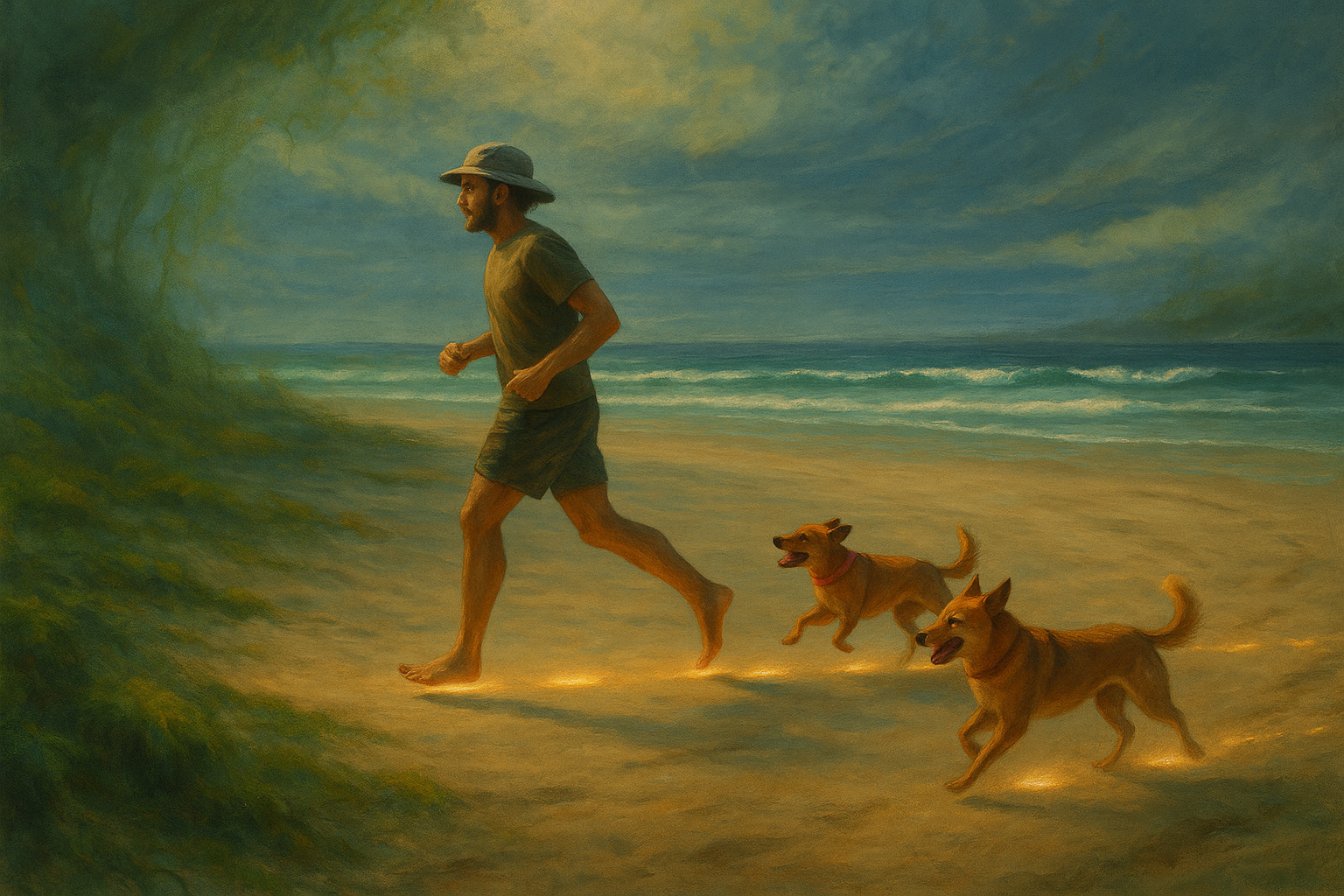The Grounding Experiment

A few months ago, a colleague handed me a copy of Born to Run, by Christopher McDougall. Within the first few pages, I was introduced to the Tarahumara, a native Mexican tribe who are known for running extraordinary distances—barefoot. The image lodged itself in my mind. I’ve been working on my body for the last few years, slowly getting stronger and more flexible, exploring ways to reconnect my body and mind. I couldn’t help but wonder: could walking barefoot actually make me stronger, healthier, and more grounded?
I love running experiments, and this one was too tempting to resist. I knew I couldn’t start by running a marathon barefoot, so I set myself a simple test: no shoes at home, and see what happens. My wife, Lenja, is used to me running strange experiments, so she barely raised an eyebrow when she saw me happily padding around the house with no shoes. “Is this what you’re doing now?” she asked, then carried on as if I’d just announced I was switching brands of tea.
The first thing I noticed about being barefoot was the sheer joy of it. The sensation of skin against the ground was more than physical. It felt like my feet were breathing a sigh of relief after decades of being confined. It felt right. Beyond comfort, I noticed a deeper shift: I felt more confident in my body, more sure-footed, as if my feet could finally do the job they evolved for.
It struck me: why outsource something as basic as trusting my own feet to a device strapped over them? Of course, I’m not advocating for barefoot living all the time. Shoes were invented to solve a practical problem, after all. I still wear barefoot shoes when outside of the house, mainly because I don’t want to slice my feet open on the road or a trail. But nothing compares to the simplicity of walking barefoot.
In the months that followed, I’ve noticed that shoes tell us a lot about people. Some choose comfort over style. For others, shoes are a status symbol. Some wear whatever’s closest to the door, while others curate their choice carefully, matching mood to occasion. Shoes can be an expression of who we are, or who we want others to believe we are.
I also noticed that very few of us ever question whether the shoes we wear are good for us. I certainly didn’t, until I read Born to Run and ran my barefoot experiment. Our feet are complex, with 29 muscles, tendons, and ligaments working together to keep us stable, adaptable, and strong. They evolved to splay, grip, and adjust to uneven ground. Traditional shoes, with their narrow toe boxes, rigid soles, and raised heels, do the opposite, squeezing, weakening, and dulling the feedback our feet are meant to provide. Over time, this can even alter our posture, contributing to aches in our knees, hips, and lower back.
But this experiment was never just about feet. It reminded me of a larger truth I’ve observed: so much of life goes unquestioned. We accept conventions like what to eat, how to work, even who we should be, without pausing to ask whether they serve us. We assume the structure of our life is fixed, when in reality it’s all malleable, open to rethinking and reshaping.
For me, experimenting is a way of life. It’s how I test assumptions, explore the unknown, and discover more of who I am. Some experiments stick, some don’t, and that’s the point. The practice itself broadens me. It’s less about finding the perfect answer and more about uncovering truths I’d never notice if I simply followed the default.
And yes, it’s often quirky. Barefoot walking isn’t exactly mainstream (to date, I have only met two other people who wear barefoot shoes). But I’ve learned to embrace my eccentricities. Every odd experiment adds another layer to my experience of life. The wider I cast my net, the more flexible and agile I become. I don’t mind walking barefoot. I don’t need mainstream approval. The only acceptance I need is my own (and my wife’s).
So, dear reader, I’ll leave you with this: what part of your life are you accepting without question? What assumptions could you test with a small, playful experiment? Maybe it’s trying a week of plant-based meals, maybe it’s stepping into a book you’d normally ignore, maybe it’s simply going barefoot in your own home. You don’t need to change everything at once. Take small (barefoot) steps. Run one experiment and see how it feels. I’d love to hear about it if you try.
Until next week,
Ric
If this post resonated with you, consider sharing it with someone walking their own path of growth.
Each week, I share personal reflections and insights from my journey of navigating the quiet tension between stillness and becoming. If that speaks to you subscribe to my newsletter and join me on this journey.
And if this post stirred something in you today, I’d love to hear from you—feel free to reply or leave a comment below.
